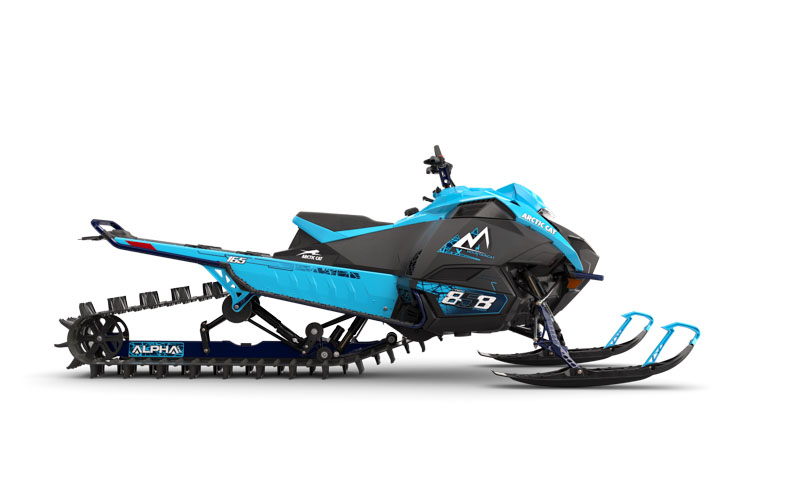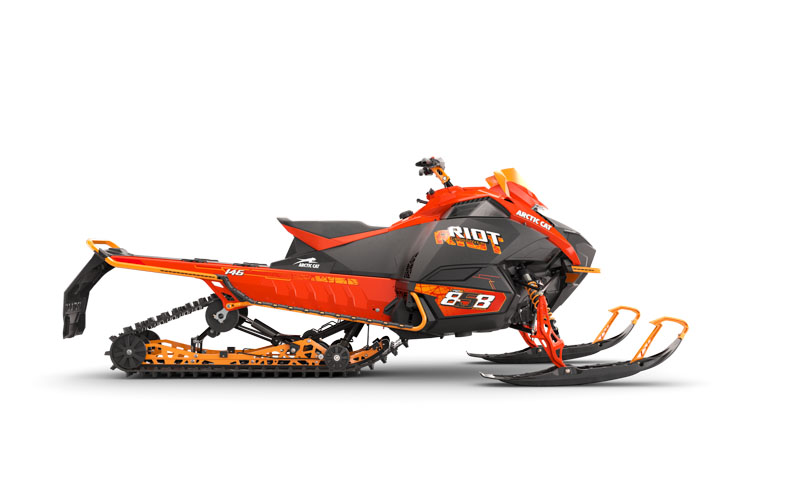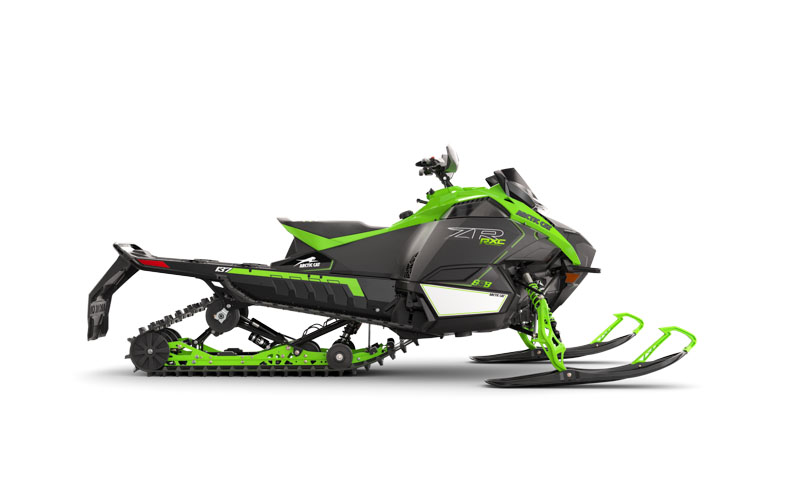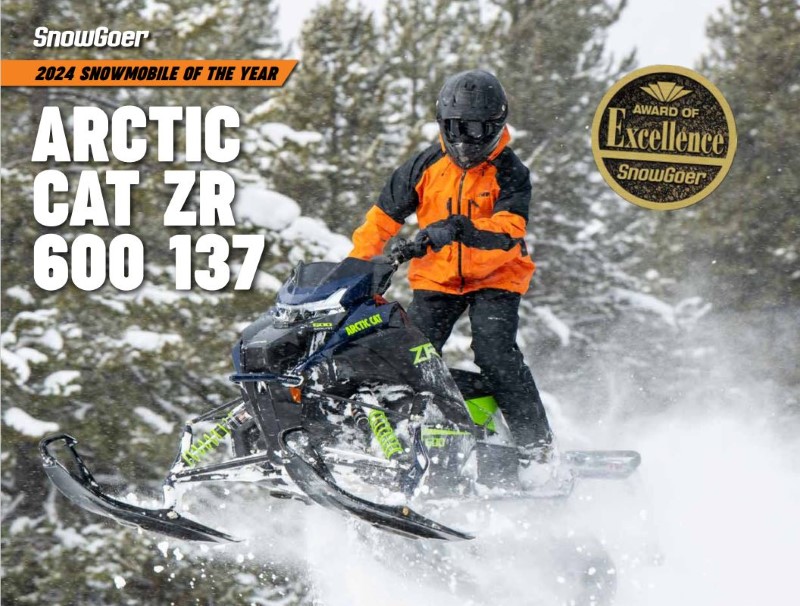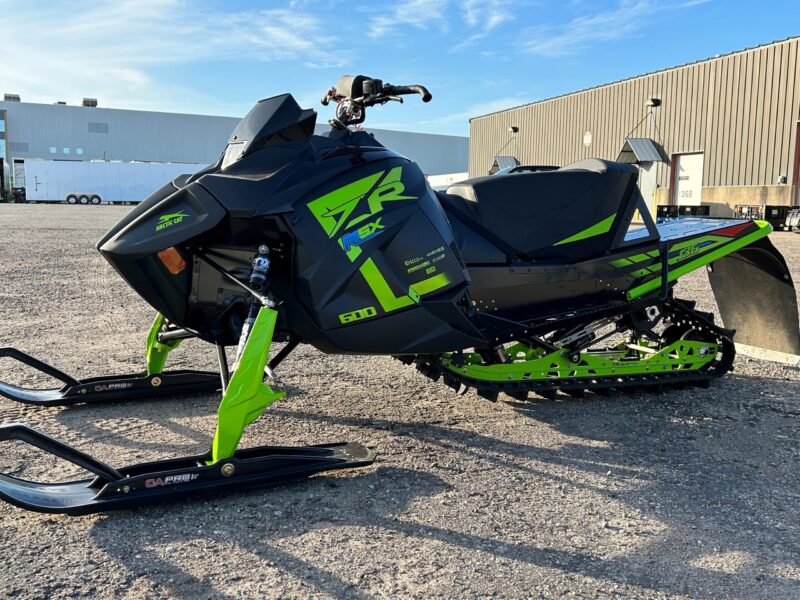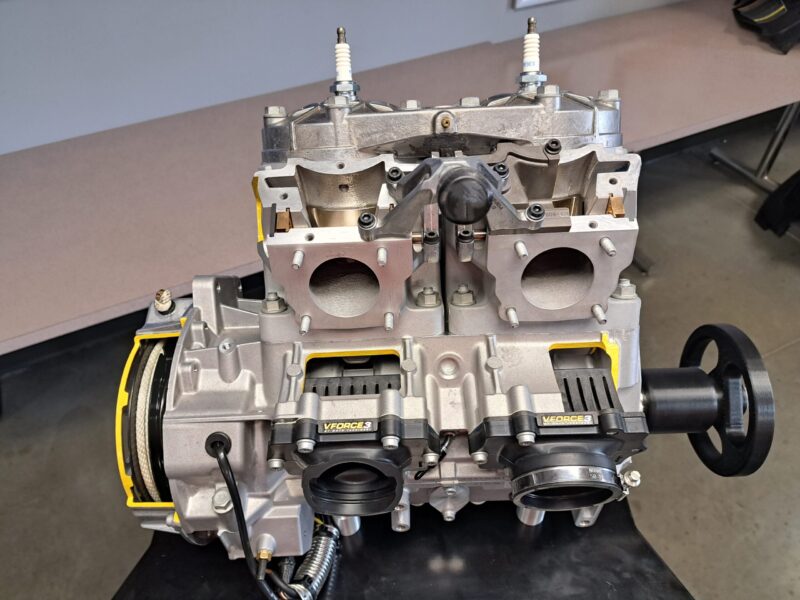
The introduction of a new turbo-powered line of snowmobiles from Arctic Cat and Yamaha has created quite a buzz for model year 2017, but shoppers on the used snowmobile market would be wise not to forget about the very first turbo-charged stock snowmobile released 13 years ago.
For model year 2004, Arctic Cat unveiled the T660 Turbo featuring a boosted 660cc, liquid-cooled, four-stroke triple in the ZR chassis. The base T660 Turbo and its touring counterpart, the T660 Turbo Touring, were both full-featured sleds – electric start, reverse and mirrors were stock equipment – built for high-mile adventures, but it was the turbo charger that attracted the most attention. After all, modern four-stroke engines had only been in snowmobiles for a couple of years, and now a turbo charger was being added to one of them, causing doubters to pose many questions: Would the boosted engine last? Would the turbo require special maintenance? Was heat management going to be an issue?
More than a dozen years later, history has spoken: The 2004-2007 T660 Turbo models have been among the most durable and time-proven Arctic Cat snowmobiles from that era, and they’re still a hot commodity on the used market.
“They really ran great, and they ran great for a long time,” said Steve Livingston of Livingston’s Arctic Cat in Hillsboro, New Hampshire. “I bet I haven’t replaced more than two turbo units in all of its years, and I’m sure I’ve sold over a thousand of them.”
Aside from their durability, the 110 hp engine provided decent trail manners – with no big wastegate chirps as were found on later turbo-charged Cats – and impressive fuel mileage exceeding 20 mpg for many riders.
The engine required a valve adjustment at about 5,000 miles, Livingston said. “If it tends to not idle on all three cylinders, that’s a sure sign that they aren’t adjusted” correctly, he said, noting that the repair typically costs $250-$300. Another common area of maintenance on T660 Turbos was the bearings on the jackshaft and driveshaft. “We typically replace all four” bearings when a machine comes in on trade, Livingston said, noting that a sure sign that the lower left bearing is shot is when the speedometer quits working.
Another interesting quirk: Solo-passenger T660 Turbo models didn’t include a rear heat exchanger and therefore would sometimes run hot or overheat on hard-packed, frozen trails, Livingston said, while the longer T660 Touring Turbo models had the exchanger and ran cooler. Therefore, Livingston highly recommends using ice scratchers on the short-track machines.
Otherwise, shopping for one of these models is a lot like shopping for other Arctic Cats of this era – look for elongated holes at suspension mounts and pivot points, know that clutches often need service and look for unusual wear to the track, shocks and tunnel.
The T660 Turbo models changed little in their four years – 2004 models had a recall related to oil blowing out of the engine, but after the recall the problem was fixed and it didn’t reappear in later models. In 2005 Cat unveiled the sexy red ST model featuring upgraded front shocks. In 2006 the ST models were available in green or black, while remote start and a heated seat was added to new Turbo LE models.
“That heated seat featured a rheostat that you could adjust instead of just having a high/low [toggle switch] like on more recent models,” Livingston said. “It’s been a great selling feature for us – I’ve had customers where that’s the only reason they switched to a four-stroke snowmobile was to get the heated seat.”
When other Cat models moved to the Twin Spar chassis, the T660 Turbo was faded out, but Livingston said they remain hot commodities on the used market. With the limited amount of change per year, a particular machine’s value is based on miles and condition rather than model year.
“For a 2004 to 2007, I can usually get $4,500 for a nice, mint model with low miles, and then it drops down from there based on their condition,” Livingston said.
EDITORS NOTE: Used Sled Shopper features also appear in Snow Goer magazine. For more aftermarket product reviews, new sled evaluations, informative how-to stories, riding destination features are more, subscribe to Snow Goer.

